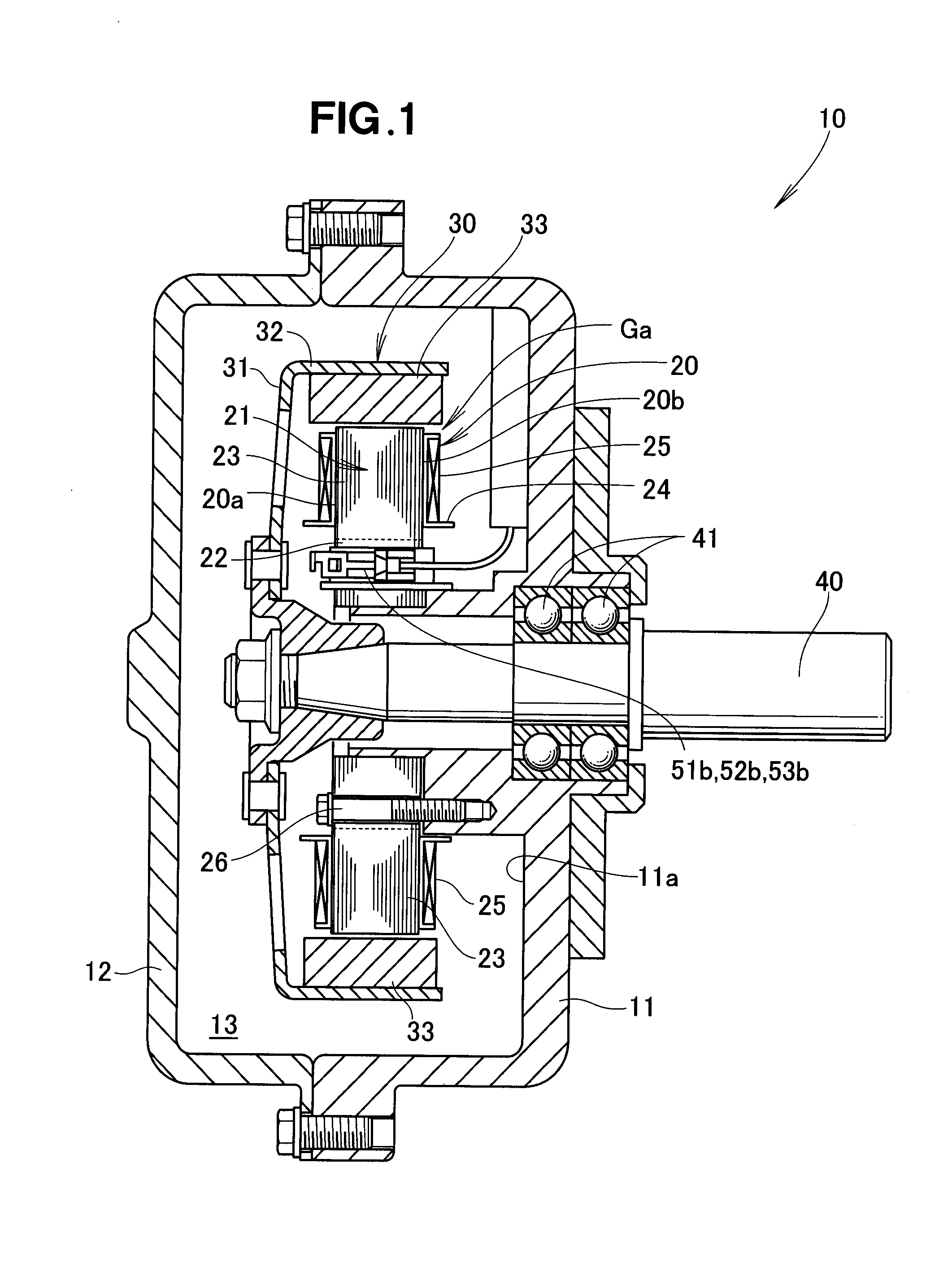Multi-pole, three-phase rotary electric machine
a rotary electric machine and three-phase technology, applied in the direction of dynamo-electric machines, electrical apparatus, control systems, etc., can solve the problems of difficult fusing (thermal caulking) between the ends of the armature windings and the pitch at which the bus ring terminals are disposed would unavoidably become small, and the crowding of the connection terminals
- Summary
- Abstract
- Description
- Claims
- Application Information
AI Technical Summary
Benefits of technology
Problems solved by technology
Method used
Image
Examples
Embodiment Construction
[0019]FIG. 1 is a sectional view showing an embodiment of a multi-pole, three-phase rotary electric machine 10 of the present invention. As shown, the multi-pole, three-phase rotary electric machine 10 includes a multiplicity of armature windings provided on a stator 20. Note that the multi-pole, three-phase rotary electric machine 10 is constructed as an electric motor for converting electrical energy into mechanical energy or as an electric power power generator for converting mechanical energy into electric energy. The power generator is driven, for example, by an engine. Hereinafter, the three-phase rotary electric machine 10 will be described as constructed as an electric motor.
[0020]The multi-pole, three-phase rotary electric machine 10, which is an outer-rotor type, DC brushless rotary electric machine, will hereinafter be referred to simply as “rotary electric machine 10”. The rotary electric machine 10, which has a multiplicity of poles (e.g., twenty-one poles), includes a ...
PUM
 Login to View More
Login to View More Abstract
Description
Claims
Application Information
 Login to View More
Login to View More - R&D
- Intellectual Property
- Life Sciences
- Materials
- Tech Scout
- Unparalleled Data Quality
- Higher Quality Content
- 60% Fewer Hallucinations
Browse by: Latest US Patents, China's latest patents, Technical Efficacy Thesaurus, Application Domain, Technology Topic, Popular Technical Reports.
© 2025 PatSnap. All rights reserved.Legal|Privacy policy|Modern Slavery Act Transparency Statement|Sitemap|About US| Contact US: help@patsnap.com



